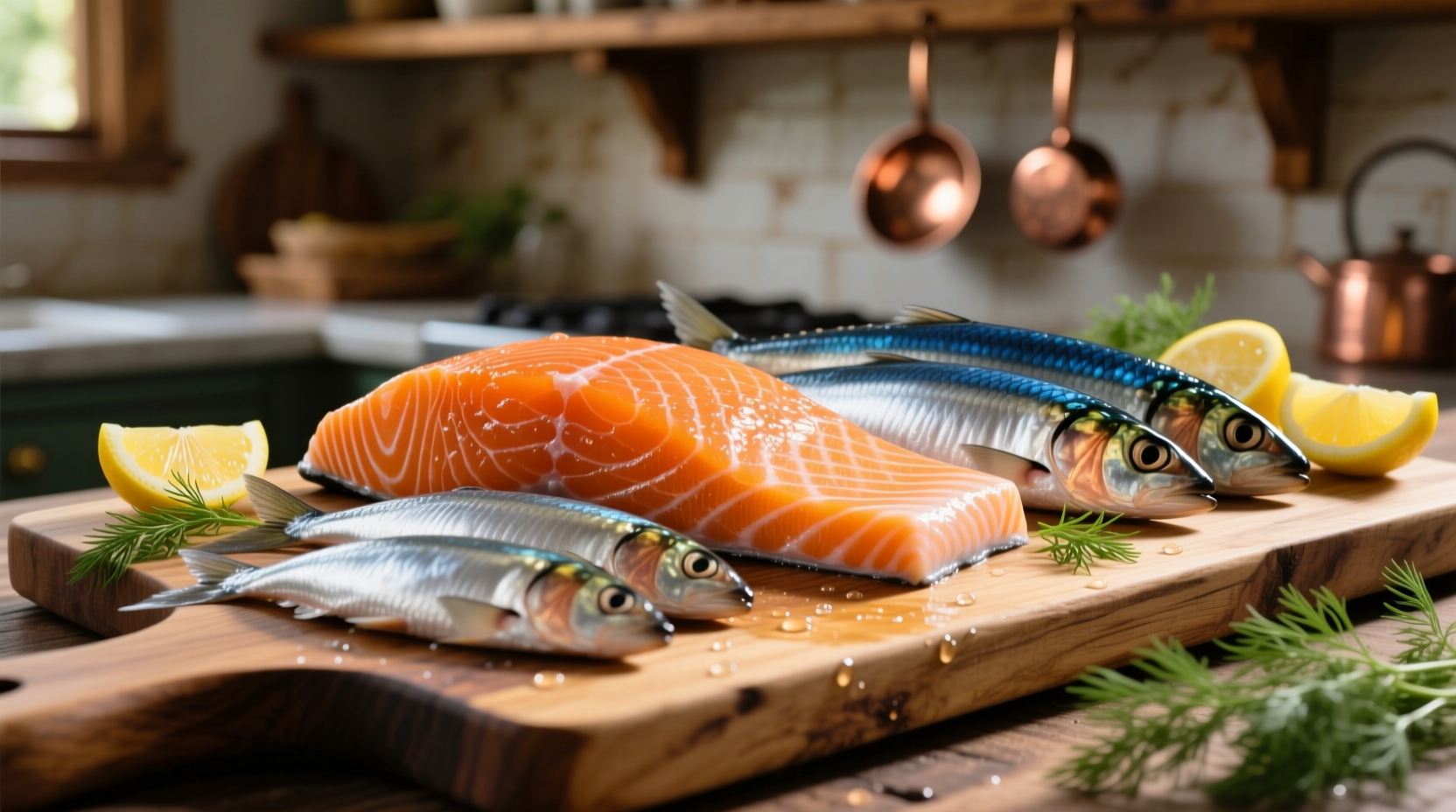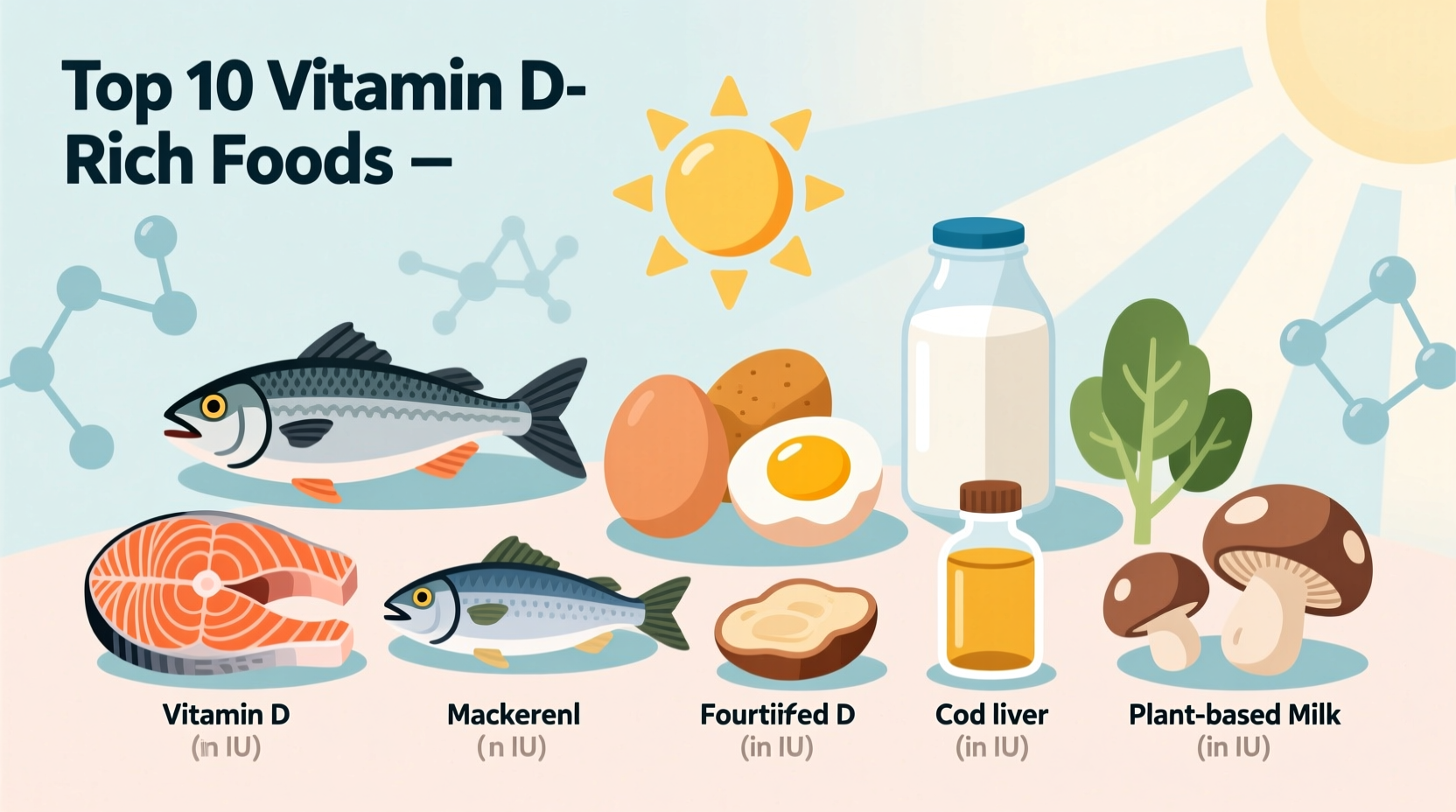The top natural food sources of vitamin D include fatty fish like salmon (447 IU per 3 oz), mackerel (306 IU), and sardines (231 IU), along with egg yolks (44 IU), beef liver (42 IU), and certain mushrooms exposed to UV light (up to 2,300 IU). Fortified foods such as milk (115-130 IU per cup), orange juice, and cereals provide additional dietary options for maintaining adequate vitamin D levels.
Discover exactly which foods deliver the most vitamin D per serving and how to incorporate them into your daily diet. This comprehensive guide provides evidence-based information on natural and fortified vitamin D sources, helping you make informed dietary choices to support bone health, immune function, and overall wellness.
Why Vitamin D Matters More Than You Think
Vitamin D isn't just about strong bones—it's a critical nutrient that regulates calcium absorption, supports immune function, and influences hundreds of genes in your body. According to the National Institutes of Health, approximately 41.6% of American adults have vitamin D deficiency, with higher rates among certain demographic groups. Unlike most vitamins, vitamin D functions as a hormone, and your skin produces it when exposed to sunlight. However, factors like geographic location, skin pigmentation, sunscreen use, and seasonal changes significantly impact your body's ability to synthesize this essential nutrient.
Your Complete Vitamin D Food Source Guide
While sunlight remains the primary source of vitamin D for most people, dietary intake becomes crucial when sun exposure is limited. Let's explore the most effective food sources organized by practical consumption scenarios.
When You Need Maximum Natural Vitamin D Immediately
Fatty fish stand as the undisputed champions of natural vitamin D content. A single 3-ounce serving of cooked salmon provides approximately 447 IU (74% of your daily value), while mackerel delivers 306 IU per serving. For those who enjoy seafood regularly, incorporating these fish twice weekly can significantly boost your vitamin D status. Wild-caught varieties typically contain higher levels than farmed alternatives due to their natural diet.

Everyday Options for Regular Vitamin D Boosts
For daily vitamin D intake without relying solely on seafood, consider these practical options:
- Egg yolks: One large yolk contains about 44 IU
- Beef liver: Provides 42 IU per 3-ounce serving
- UV-exposed mushrooms: Certain varieties like maitake can offer up to 2,300 IU per serving
- Canned sardines: Deliver 231 IU per 3-ounce serving
These foods fit seamlessly into breakfast, lunch, and dinner routines. For example, adding mushrooms to your morning omelet combines two vitamin D sources for enhanced nutritional impact.
Fortified Foods for Consistent Daily Intake
For those with limited access to natural sources or dietary restrictions, fortified foods provide reliable vitamin D options:
| Food Item | Vitamin D (IU per serving) | Percent Daily Value |
|---|---|---|
| Fortified milk (cow's or plant-based) | 115-130 IU per cup | 14-16% |
| Fortified orange juice | 100 IU per cup | 13% |
| Fortified cereals | 40-100 IU per serving | 5-13% |
| Fortified yogurt | 80 IU per 6 oz | 10% |
The USDA FoodData Central database confirms these values, though actual amounts may vary by brand and fortification practices. Always check nutrition labels as fortification levels aren't standardized across all products.
Practical Integration Strategies for Your Diet
Knowing which foods contain vitamin D is only half the solution—incorporating them effectively matters most. Consider these evidence-based approaches:
Maximizing Absorption Through Food Pairing
Vitamin D is fat-soluble, meaning it absorbs best when consumed with dietary fats. Pair vitamin D-rich foods with healthy fats to enhance absorption:
- Add avocado to your fortified cereal
- Prepare salmon with olive oil-based sauces
- Include nuts or seeds with fortified plant milks
Research published in the American Journal of Clinical Nutrition demonstrates that consuming vitamin D with fat increases absorption by up to 32% compared to low-fat combinations.
Seasonal Planning for Year-Round Sufficiency
Vitamin D intake needs adjustment based on seasonal sunlight availability. During winter months in northern latitudes, dietary sources become significantly more important. Consider these seasonal strategies:
- Fall/Winter: Increase fatty fish consumption to 3x weekly
- Spring/Summer: Maintain fortified food intake while safely increasing sun exposure
- Year-round: Include at least one vitamin D source in your daily breakfast
Important Considerations for Different Dietary Needs
Vitamin D requirements and sources vary across different populations. Understanding these distinctions helps tailor your approach:
Vegan and Vegetarian Adaptations
Plant-based diets present unique challenges for vitamin D intake. While mushrooms exposed to UV light offer the best natural plant source, fortified foods become essential components:
- Choose plant milks specifically fortified with vitamin D2 or D3 (look for lichen-derived D3 for vegan options)
- Include fortified cereals and orange juice as daily staples
- Consider UV-exposed mushroom varieties like chanterelles or morels
The Academy of Nutrition and Dietetics notes that vegetarians and vegans often have lower vitamin D levels, making strategic food selection crucial for maintaining adequate status.
Special Considerations for Aging Populations
As we age, our skin's ability to produce vitamin D decreases by approximately 75% compared to younger adults. Simultaneously, older adults often have reduced dietary variety. For seniors:
- Prioritize fortified dairy or plant-based alternatives
- Include canned fish in easy-to-prepare meals
- Consider smaller, more frequent servings of vitamin D foods throughout the day
The National Institute on Aging recommends that adults over 70 increase their daily vitamin D intake to 800 IU, making dietary sources particularly important.
When Food Alone Isn't Enough
While focusing on vitamin D-rich foods is ideal, certain situations may require additional approaches:
- Individuals with malabsorption conditions (Crohn's, celiac disease)
- People with darker skin tones living in northern latitudes
- Those with limited sun exposure due to medical conditions or cultural practices
In these cases, consulting with a healthcare provider about supplementation may be necessary. The Endocrine Society recommends testing blood levels before starting high-dose supplementation to avoid potential toxicity.
Your Action Plan for Optimal Vitamin D Intake
Implement these practical steps to ensure adequate vitamin D through your diet:
- Track your current intake using a food diary for one week
- Identify gaps in your vitamin D sources
- Add one new vitamin D-rich food to your regular rotation
- Pair vitamin D foods with healthy fats for better absorption
- Adjust your choices seasonally based on sunlight availability
Remember that consistency matters more than perfection. Gradually incorporating these foods into your regular eating patterns creates sustainable habits that support long-term health.











 浙公网安备
33010002000092号
浙公网安备
33010002000092号 浙B2-20120091-4
浙B2-20120091-4